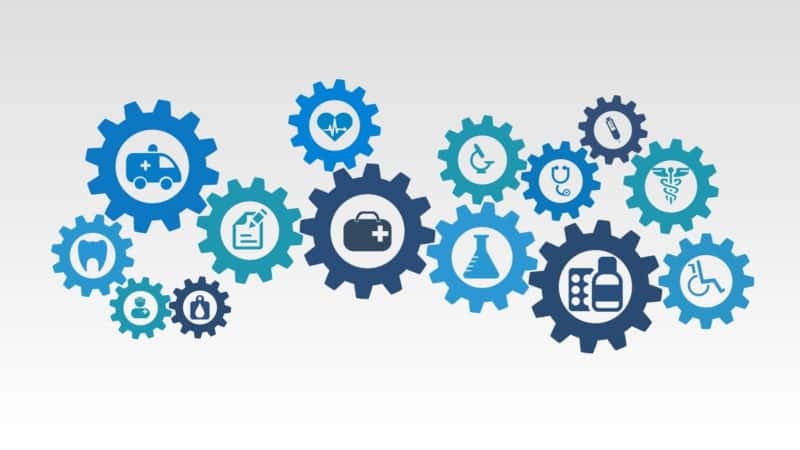Is there a New Age Dawning in Medical Technology?
It is 2020, and we are witnessing an evolution in technology. Among the most impactful of these technologies are those in the field of medical and healthcare technology. Medical technology receives enormous financial backing, both in terms of social appreciation and business value. Most importantly, it is the branch of technology directly aimed at saving and improving lives. So what is the future of healthcare technology?
The medical technology industry consists of instruments, apparatuses, or machines that aid in the prevention, diagnosis, or treatment of illness and disease. Healthcare technology and devices are also used for detecting, measuring, restoring, correcting, or modifying the structure or functions of the body to achieve a targeted health outcome.
Purveying the advancements in this industry is key to understanding the direction of the medical field as a whole, and for prospecting potential avenues for career specialization or investment. While many of the technologies discussed in this article are years away from completion, the foundations are being laid for these industry-changing developments that will fuel the imminent paradigm shifts of the future.
The United States maintains the largest medical device market in the world, with over 300,000 jobs domestically and a market value that totals out at a whopping $156 billion, representing a 40% stake of the global market value. Projections estimate market growth by up to $208 billion by 2023. But what makes this industry so interesting to explore is that much of this growth is occurring within R&D projects along vectors of bleeding-edge technology at a speed proportional to adjacent technological advances, that is, the future of modern medical device technology will always be with the organizations maintain connections to other tech markets, making tech metropolises like Silicon Valley and Chicago hot-beds for medical tech.
Medical Technology of the Future
Holographic Anatomy:
One futuristic technology of medical technology is already here, showcased in tech such as the Microsoft HoloLens. Holographic anatomy refers to technology that projects a hyper-realistic image of a patient’s anatomy either directly onto the patient’s body or onto a blank service for educational or diagnostic purposes. This allows for surgeons to make cuts along projected lines that represent the patient’s actual body, reducing the risk of excess damage, and it also allows for medical professionals to study the nuances of individual vascular systems, rather than being limited to drawn or printed representations of a single example of physiology. Case Western has already begun the implementation of this technology for the 2020 school year.
Augmented Reality:
Augmented reality operates within the same concept of holographic anatomy, but aims to take the tech one step further. Instead of projecting a personalized image of the patient’s anatomy onto the patient’s body, augmented reality projects seek to project this information directly to the surgeon’s eyes, providing real-time updates on the patient’s biofeedback, offering potentially life-saving information on a scale we have previously relegated to musings of science fiction. What is amazing is that this technology is not too far away. We can expect to see this within the decade. An example of a current project is Google Contact Lens, which would provide diabetics with real-time updates on blood sugar and other crucial bio-markers. As holographic anatomy technology becomes more integrated, augmented reality tech will be a natural next step in its progression.

Brain-Computer Interfacing:
Stepping further into the realm of science fiction, brain-computer interfacing refers to technology that is aimed at improving or even replacing aspects of the human brain. If this sounds too alien to believe, you need to only look to cochlear implants and retinal implants to see that the first neuroprosthetics have already reached the market. Rarer stories have circulated concerning cases of paralyzed patients using brain implants to translate their brain’s electrical signals into an actual motor function, which would have otherwise been impossible due to their paralysis. We can expect to hear more about large-scale projects aimed at delivering on this technology in the coming years.
3D Printed Drugs:
In 2019 you can 3D print everything from food to houses, so there shouldn’t be anything too alarming about the concept of 3D printed drugs right? Well, you might be surprised to hear this is already happening and has been for nearly 4 years. In August 2015, reports show that the FDA approved a drug named Spritam that is made by 3D printers in order to dissolve more quickly upon digestion. FabRx, a company founded in 2014 for this exact purpose, has communicated that it will commercialize printed tablets within the next 5-10 years.
3D Printed Organs:
So now that you’ve heard of 3D printed drugs, how about 3D printed organs? Astonishingly, research is being conducted right now to deliver on technology that does exactly that. We aren’t quite to the level of being able to instantaneously print entire organs, but we are reaching the point of printing compatible cells that then grow together in a lab culture to replicate organ functions. Due to the risks involved, it may be quite some time before we see this technology come to market, or its use in human trials, but regardless it is definitely in the works.
Automated Surgery:
While it will be some time until automated machinery is trusted enough to perform full-scale surgeries, the foundations are indeed being set. The Imperial College of London has already tested the i-Knife, which can detect cancerous tissue in real-time, allowing a surgeon to remove tumors with a drastically reduced risk of leaving behind any cancer cells.
Organs on Chips:
One of the foremost costs in clinical trials is the sheer scale of the trials and how long they take, that is, it takes hundreds if not thousands of biological data sets to run against the various control groups established in a clinical trial. This can take years and years to do properly. This problem, however, is being addressed by the Organs on Chips project conducted by Harvard University. This technology would allow clinical trials to use massive data sets of organ tissue and other biological information to quickly generate clinical trials for certain drugs, or procedures. If you consider a hype-drug like CBD, this technology could allow for a quick turn-around in demonstrating how the drug affects individuals and even individual organs at that. This technology will see the greatest leap when quantum computing arrives, which would allow computers to instantaneously predict how a drug might interact with each individual cell of an individual’s body–something to look forward to for certain.

Healthcare Robots:
In the context of this list, it should be no surprise that robots will soon join the ranks of healthcare operators. TUG Robots are in the beta-phase of testing and are being designed to administer medications, deliver medical supplies, and assist in information delivery processes–all of which are processes aimed at drastically increasing the efficiency of hospitals and medical processes.
RIBA Robot is another project in the works. This robot will assist the handicapped and injured to and from their bed, an exercise previously left to the hospital lift team. As the first robots are successfully launched, you can be sure that both their prevalence and skillsets will increase over time.











